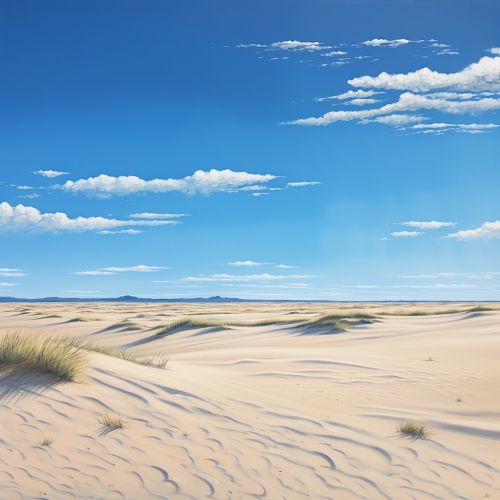Climate of Africa
Introduction
Africa, the world's second largest continent, has a diverse climate that varies from tropical to subarctic on its highest peaks. Its northern half is primarily desert, or arid, while its central and southern areas contain both savanna plains and dense jungle (rainforest) regions. The continent is surrounded by the Mediterranean Sea to the north, the Isthmus of Suez and the Red Sea to the northeast, the Indian Ocean to the southeast, and the Atlantic Ocean to the west.
Climate Zones
Africa is divided into six main climate zones: desert, semidesert, Mediterranean, savanna, rainforest, and highland. Each of these zones is characterized by unique temperature ranges and amounts of precipitation.
Desert
The largest climate zone in Africa is the desert. The Sahara, the largest hot desert in the world, extends across much of North Africa. This region experiences extremely high temperatures, often exceeding 40°C (104°F), and receives less than 25 cm (10 in) of rainfall per year. The desert also includes the Kalahari in the south and the Namib along the southwestern coast.


Semidesert
The semidesert, or Sahel, borders the Sahara to the south and is a transitional zone between the desert and the savanna. The Sahel region receives more rainfall than the Sahara, but still less than the savannas to the south. The region is characterized by grasslands, shrubs, and sparse trees.
Mediterranean
The Mediterranean climate zone is found along the northern and southern tips of Africa. This region experiences mild, wet winters and hot, dry summers. The Mediterranean zone is home to the famous wine-producing regions of South Africa.
Savanna
The savanna climate zone, characterized by grasslands with scattered trees, is found around the equator and in the subequatorial regions. The savanna experiences high temperatures throughout the year, with a wet season and a dry season. The largest savanna in Africa is the Serengeti, which is known for its large wildlife populations.
Rainforest
The rainforest climate zone is found in the equatorial region of Africa. The African rainforest is characterized by high rainfall and constant temperatures throughout the year. The largest rainforest in Africa is the Congo Rainforest, which is the second largest rainforest in the world after the Amazon.
Highland
The highland climate zone is found in the mountainous regions of Africa, particularly in the East African Rift. This region experiences cooler temperatures due to its high elevation, and its climate varies from tropical at the base to arctic at the peaks of the highest mountains.
Climate Change in Africa
Africa is particularly vulnerable to climate change due to its high dependence on natural resources and its limited capacity to adapt to changes. Climate change is expected to exacerbate existing challenges such as water scarcity, food insecurity, and health issues.


